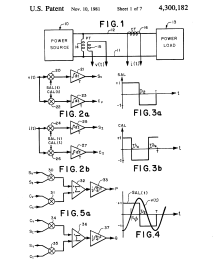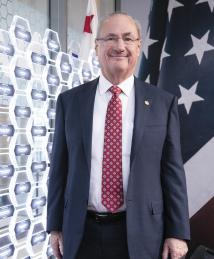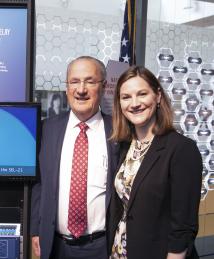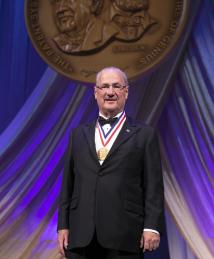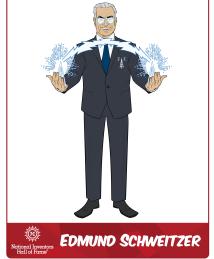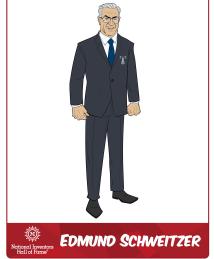Edmund O. Schweitzer III
"When people pursue their dreams, I am convinced folks invent things."
Edmund O. Schweitzer III invented the first microprocessor-based digital protective relay, revolutionizing the performance of electric power systems with computer-based protection and control equipment, and making a significant impact on the electric power utility industry.
Schweitzer was born in Evanston, Illinois, and his family encouraged innovative thinking. Both his grandfather and father were inventors and entrepreneurs. In an interview with the National Inventors Hall of Fame®, Schweitzer shared, “I’ve always been very, very interested in energy, and of course, my father and grandfather having dedicated their careers to electric power, I really wanted to see if I could invent and build things that other people would use.”
While earning his bachelor’s and master’s degrees in electrical engineering at Purdue University in 1968 and 1971, he developed an interest in electric power system protection and protective relays, which are designed to detect electrical faults that cause power outages.
Schweitzer earned his doctorate from Washington State University in 1977 and then started his own company, Schweitzer Engineering Laboratories (SEL), in the basement of his Pullman, Washington, home in 1982. He started the business with a modest $2,000 investment and the goal of developing and manufacturing digital protective relays and related products to make electric power safer, more reliable and more economical. “We’re in a business to add value to society,” Schweitzer has said of SEL.
At the time, utilities relied on bulky relays made of springs, magnets and coils. These relays could not identify where a fault was, nor could they create an accurate record of what caused faults. So Schweitzer developed a more precise and reliable digital relay, which was one-eighth the size, one-tenth the weight and one-third the price of previous mechanical relays.
SEL introduced and shipped its first product, the SEL 21, in 1984. This multifunctional digital relay not only protected power systems but also recorded data, helped locate faults and provided innovations that have since become standard features of protective relays. Also introduced in 1984, the SEL-PRTU was the first device to enable communication to multiple relays.
Schweitzer’s digital technology streamlined design work in protection and control systems and provided more flexible operation options, along with increased reliability and affordability.
Today, SEL is a 100 percent employee-owned company with a worldwide workforce of more than 6,000. Its equipment is in service in 168 countries at voltages from 120 volts through 765 kilovolts, protecting feeders, motors, transformers, capacitor banks, transmission lines and other power apparatus. Its customers include utility companies and operations using large amounts of power, like mines, factories, hospitals, universities and data centers. Schweitzer is not only the founder but serves as the president and chief technology officer of SEL.
A member of the National Academy of Engineering and an IEEE Fellow, Schweitzer received the IEEE Medal in Power Engineering in 2012. He holds more than 200 patents worldwide.
Discussing the drive to create and innovate, Schweitzer said, “Why shouldn’t we invent — wake up every day wanting to go to work to find a better way to do something for other people?” A generous supporter of National Inventors Hall of Fame education programs, Schweitzer has made personal visits to Camp Invention® program sites to encourage that same drive in the next generation of inventors and entrepreneurs.
